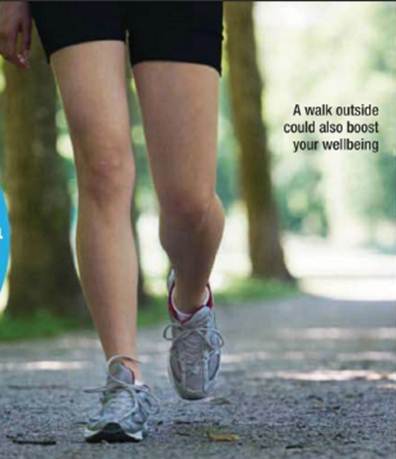Stay healthy, lose weight and feel
fantastic. If you saw all those claims on a bottle of pills you’d think it was
too good to be true. But walking can deliver all these fantastic results- and
so much more. Plus, it’s fun, easy to fit into your life and it’s free!

We know that waliking can offer amazing
helth benefits. Why? Beacause we have literally been there and got the walking
bug after training hard and doing our first ever Moon Walk London back in 2010,
walking a marathon (or half marathon) through the night in decorated bras to
raise money to fight breast cancer. It was such an uplifting, life- changing
experience that we have been hooked ever since. So this year, we are proud to
do it again as part of our continuing media partnership with the event’s
organisers, Walk the Walk. And we are hoping to inspire you to join us and
take the first step to a fabulous, cost- free way of boosting your mood,
getting fit and feeling great. Whether your aim is fat burning, stress busting
or just to look more toned, we have the approach that can help you achieve your
goal. ‘Our mantra is: “If you think you can, you will”,’ explains Walk the
Walk’s inspiring founder, Nina Barough. ‘It is a huge challende, and we rarely give
our body challenges, but most of the people who do our walks had never done
anything like it before. Walking is the ideal way to lose weight and improve
fitness- the hardest thing is taking the first step.But you will find loads of
help on our website(www.walikthewalk.org) and once you start to succeed, feel
fitter and have more energy, it becomes addictive.’ So do not wait for the
weekend, pull on your trainers, go outside and get moving.
Start with the basics

A
walk outside could also boost your wellbeing
Whether your goal is a 26- mile MoonWalk or
half an hour round the park, het the basics right. ‘Comfort and practicality
are key qualities,’ says Nina Barough. Wear layers of loose, comfortable
clothing, which you can layer up or peel off. To achieve any health benefit
from your walking, you need to manage at least 30 minutes’ brisk walking five
or more times a week. Walk as if you are rushing to an appoitment- energetic
and purposeful. Focus on how that feels- you should be breathing faster but still
be able to talk, and feel your pulse, try the talk test- if you are panting so
much you can not talk, it is too fast. If you can hold a tune, speed up. And
get your walking posture right. Aim to walk tall with your chin parallel to
the ground, eyes focused ahead, shoulders relaxed and bottom tucked in- the
right posture will lessen strain on muscles and joints.
The good trainer guide
Whatever distance you are planning to walk,
follow consultant podiatric surgeon Mike O’Neill’s guide to chooding the right
trainers.
Step one
know your feet. ‘Everyoner is different and
only 20% of people have “neutral” feet,’ says Mike O’Neill. Most either have a
low arch, so your feet tend to roll inwards as they hit the ground, or high
arches where shock absorption is an issue because of the extra stress on the
heel and for foot. It you are not sure about your feet, look at an old pair of
shoes. If you have low arches, your shoes will show a slightly inward lean.
With high arches, the lean will be slightly outward. Or try the wet- foot test.
Make footprints on a tiled floor with damp feet. If the prinet shows almost the
whole of the sole of your foot, you probably have a low arch. With a regular
arch, the band between the heel and forefoot will be around half the width of the
foot, and with a high arch you will see only a narrow band between the forefoot
and heel.
Step two
Buy from a reputable sports shop with
trained staff- some shops have force plates of treadmills where staff can
assess your feet, but the most important part is the skill of the person doing
it. Avoid Saturdays when shops and staff will be busy. Take a few pairs of old
trainers with you and take sports socks to try on with trainers- and for the
best fit, buy shoes in the afternoon when your feet will have swollen.

Best
foot forward step outside to help safeguard your health
Step three
Find the right shoes for you- try four or
five pairs before deciding. If you have a low arch, you need a stability
trainer with extra support on the inside to prevent your feet rolling inwards,
which can lead to inflamed tendons and heel, knee and shin pain. If you have a
high arch, go for maximum shock absorption- without it there will be too much
pressure on your heel and forefoot. Good fit is crucial, but do not make it too
snug- you need wiggle room of about 1cn for your longest toe.
Step four

Put trainers on properly- put your foot
into the shoe and tap your heel three times on the ground to lodge your heel in
the back of the trainer. Lace up from the bottom, tightening the top part of
the laces last- this ensures your heel is hirmly held by the shoe and your toes
are not butting up against the end of the shoe. Also, ensure that your toenails
are not too long and wear sports socks- ideally with thicker areas on the toe
and heel.
Step five
Take it easy. Do not do a five- mile walk
in a new pair of shes- break them in gently by wearing them round the house and
garden. If you suffer from sweaty feet, wipe your feet with surgical spirit
before your walk to help dry them out and prevent blistering.